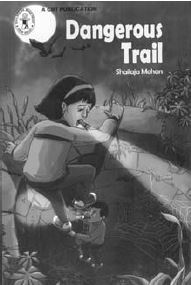Dangerous Trail by Shailaja Mohan is a young adult novel, narrating the adventures of a fourteen-year-old girl named Medha and a Siberian crane named ‘Comrade’. Medha’s elder brother, Arijit, is a naturalist who works with the ‘Department of Environment’. Siberian cranes are of special interest to him. So, he tags a young bird in Siberia, hoping to understand more about the species. Comrade arrives in Bharatpur, India, where Arijit is stationed and goes missing shortly afterwards. The story follows Medha as she tries to unravel the mystery of the missing Comrade with her friend, Dariya. Along the way, Medha runs into a drug-dealing Pathan, a kooky Nawab and a villainous researcher. This is Mohan’s third book in English after Secret of the Monster Mountain and Adventures in Tiger Country.
Of late, there have been several books written about the environmental crisis, leading to the use of the term, ‘climate change fiction’, also called ‘cli-fi’. Notable writers like Amitav Ghosh, Paolo Bacigalupi and Naomi Klein have tackled the crisis in fiction and non-fiction. Amitav Ghosh’s non-fiction book, The Great Derangement: Climate Change and the Unthinkable, laments that the environmental disaster has not taken precedence over other themes in literature. In fiction, ‘cli-fi’ involves climate change as part of the underlying themes of a novel. Shailaja Mohan introduces basic concepts about the environmental crisis through this story. But the delivery is preachy at points in the novel. The crisis, as introduced in the story, strongly affects people who are dependent on the forest and wetlands. Dariya’s family, traditionally fishermen, suffer because of the drying up of the wetlands. The conflict of human interest and environmental protection is introduced via the characters of Mr. Kadamba and the villagers residing outside the sanctuary. Private collectors like the Nawab seize wildlife and cause more destruction through their ‘good intentions’. The lack of wildlife in cities is another topic touched upon by this book. The descriptions of the scientific methods used in ornithology are likely to interest young readers.

